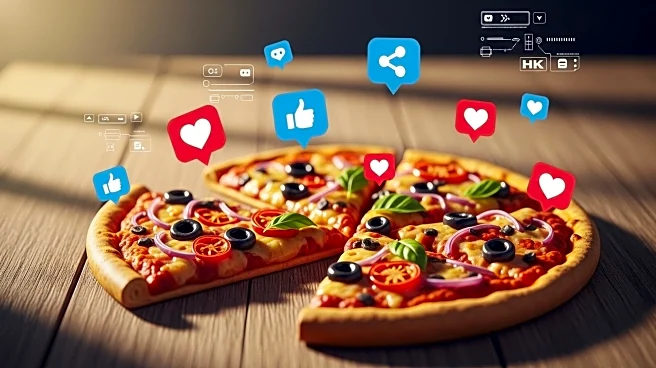What's Happening?
Cracker Barrel experienced a significant decline in store traffic following a logo rebrand that was met with widespread customer backlash. The company initially replaced its 'Old Timer' logo, which led to a 5.3% drop in traffic year-over-year in the week following the announcement. The backlash continued, resulting in a 10% traffic decline for the first three weeks of September. In response, Cracker Barrel reverted to its original logo and severed ties with Prophet, the design firm responsible for the rebrand. The company anticipates a comparable store traffic decline of 4-7% for fiscal 2026, with projected total revenue between $3.35 billion and $3.45 billion.
Why It's Important?
The swift reversal of Cracker Barrel's logo change underscores the importance of brand identity and customer loyalty in the restaurant industry. The backlash highlights how changes perceived as contradictory to a company's heritage can alienate core customers, impacting financial performance. The company's share price has dropped over 20% since the rebrand announcement, illustrating the financial risks associated with brand alterations. This incident serves as a cautionary tale for businesses considering rebranding, emphasizing the need to align changes with customer expectations and values.
What's Next?
Cracker Barrel is focusing on improving its food and overall guest experience to recover from the rebrand fallout. The company plans to emphasize its traditional values and heritage to reassure customers. Executives are expected to engage directly with patrons to apologize and rebuild trust. The company is also closing 14 Maple Street Biscuit Company locations, although it is unclear if this is related to the rebrand. Cracker Barrel's future efforts will likely focus on stabilizing traffic and revenue while addressing customer concerns.
Beyond the Headlines
The incident raises questions about the balance between innovation and tradition in brand management. Cracker Barrel's experience highlights the potential consequences of neglecting customer sentiment in strategic decisions. The company's response may influence how other brands approach rebranding, particularly those with strong cultural or historical ties. The situation also reflects broader trends in consumer behavior, where brand loyalty can significantly impact business outcomes.










